Search
Remove Ads
Advertisement
Summary 
Loading AI-generated summary based on World History Encyclopedia articles ...
Search Results

Definition
Lugh
Lugh (also Lug, Luga) was one of the most important Celtic gods, particularly in Ireland, and he represented the sun and light. Although originating as an all-wise and all-seeing deity, Lugh was later thought of as a historical figure, great...
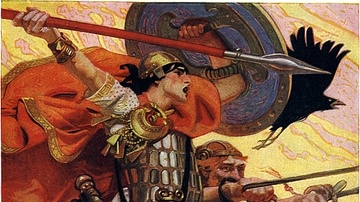
Definition
Cú Chulainn
Cú Chulainn (pron. Koo-kul-in), also Cúchulainn, is one of the greatest heroes of Irish-Celtic mythology, particularly the Ulster Cycle. The son of another cultural hero-figure, Lugh, Cú Chulainn is a mighty warrior whose weapon is Gáe Bolga...
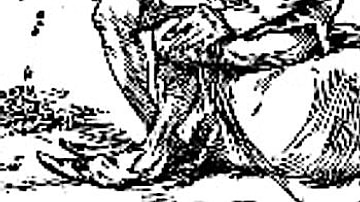
Definition
Leprechaun
Leprechauns (also leprecauns or lepracauns) are figures in Irish folklore who guard hidden treasure. Regarded as small and incredibly agile male fairies or goblins, they most often guard a pot of gold. Leprechauns live solitary lives and...
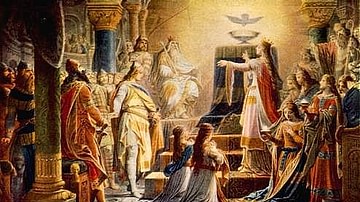
Definition
Grail Legend
The Grail Legend (also known as the Grail Quest, Quest for the Holy Grail) developed in Europe c. 1050-1485 CE. It most likely originated in Ireland as folklore before appearing in written form sometime before 1056 CE in The Prophetic Ecstasy...

Definition
The Dagda
The Dagda (also Daghda, Daghdha, Dagdae, or Dagda Mór), usually written with the definite article, is one of the most important gods in Irish-Celtic mythology. He appears as a multi-talented warrior-leader of the Tuatha Dé Dannan, invaders...
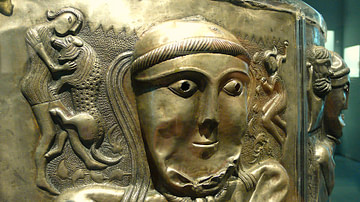
Article
The Ancient Celtic Pantheon
The ancient Celtic pantheon consisted of over 400 gods and goddesses who represented everything from rivers to warfare. With perhaps the exception of Lugh, the Celtic gods were not universally worshipped across Iron Age Europe but were very...
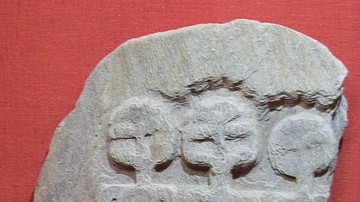
Definition
The Mórrigan
The Mórrigan (also Morrighan, Môr-Riogain or Morrigu), usually referred to with the definite article, was a great warrior-queen goddess in Irish-Celtic mythology. She was most associated with inciting war, then stirring up the fury and frenzy...
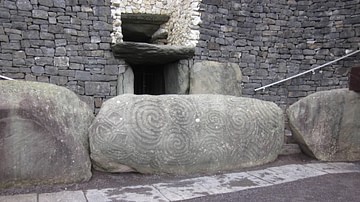
Definition
Newgrange
Newgrange is a Neolithic monument located in the region of Bru na Boinne, County Meath, Ireland. The name is fairly modern and comes from the 'newer' grange (farm) of the monks of Mellifont Abbey near Drogheda 8 miles (14 km) north. Although...
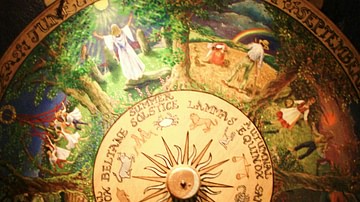
Definition
Wheel of the Year
The Wheel of the Year is a symbol of the eight Sabbats (religious festivals) of Neo-Paganism and the Wicca movement which includes four solar festivals - Winter Solstice, Spring Equinox, Summer Solstice, Fall Equinox - and four seasonal festivals...

Definition
Ancient Celtic Religion
The polytheistic religion of the ancient Celts in Iron Age Europe remains obscure for lack of written records, but archaeology and accounts by classical authors help us to piece together a number of the key gods, sacred sites, and cult practices...